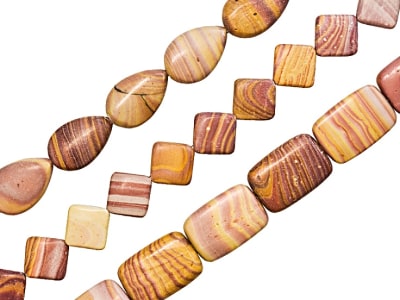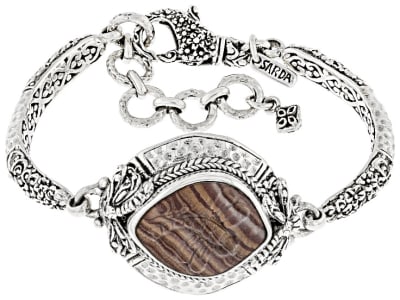Hickoryite is a red, pink, and yellow banded variety of Rhyolite that comes from Rodeo, State of Durango, Mexico. Autumn or rainbow hickoryite is mostly brown or tan with red, pink, or yellow bands. It is similar in appearance to wonderstone but wonderstone is slightly harder. The striations or banding occur due the lava flow during the formation of the stone. The name Hickoryite comes from the resemblance to the wood from the hickory tree.
General Information
Common Name
Hickoryite
Species
Rock
Inclusions
Hickoryite might show banding or spherical growth. If stones are viewed in cross-section using magnification they typically show crystalline growth.
Luster
Dull
Cleavage
None
Chemical Name
silicon dioxide + potassium Oxide
Chemical Formula
SiO2+K2O
Crystal System
NA
Chemistry Classification
Rock
Countries of Origin
Unknown; Mexico
Care
Normal care

